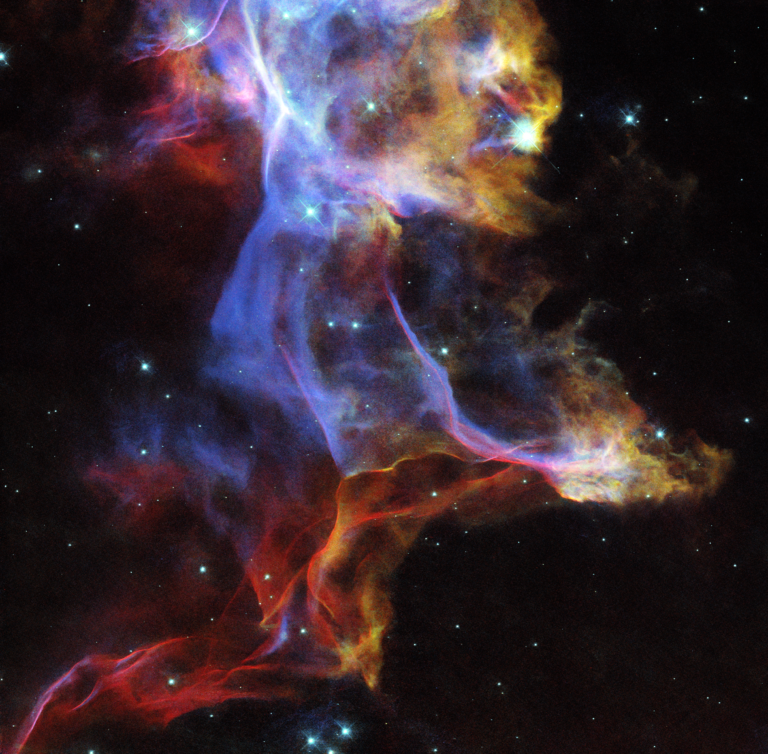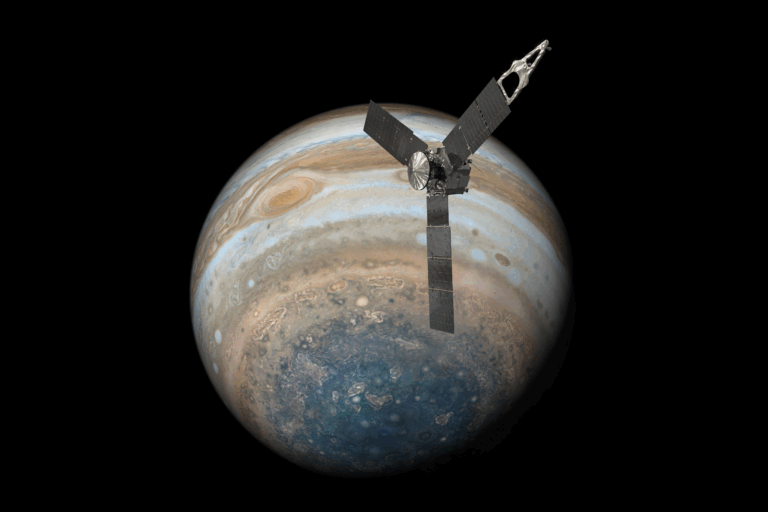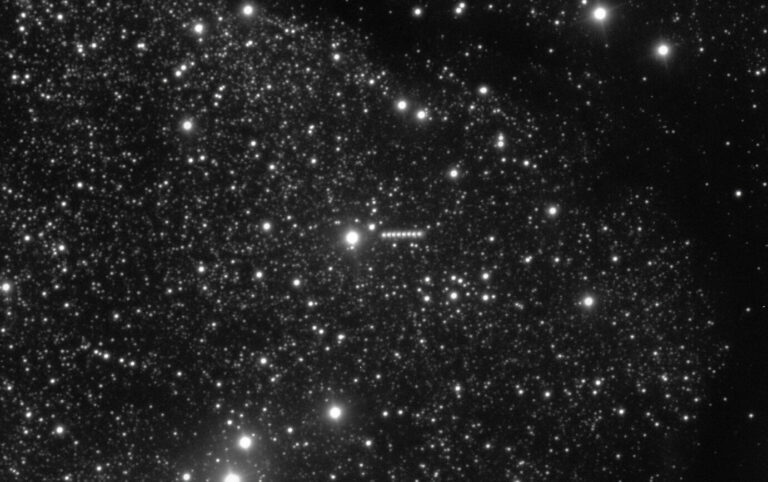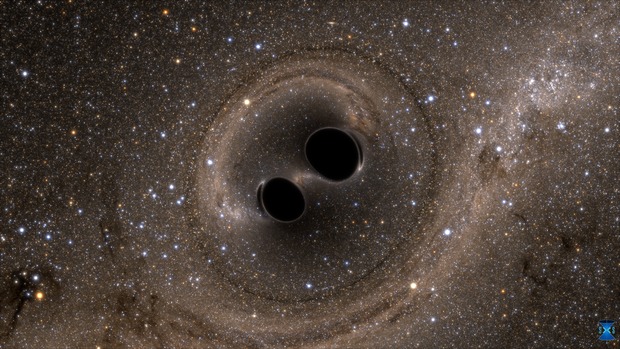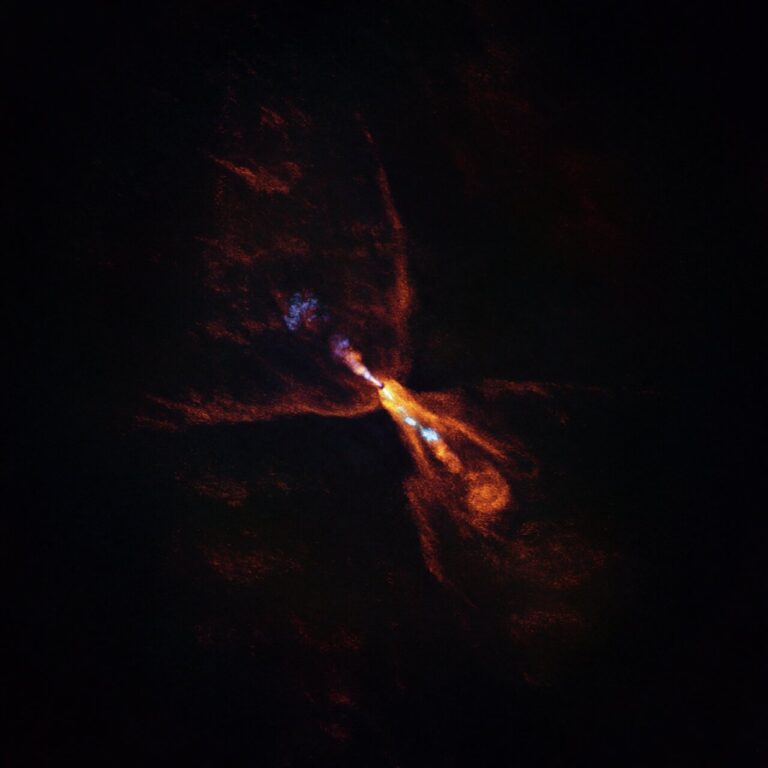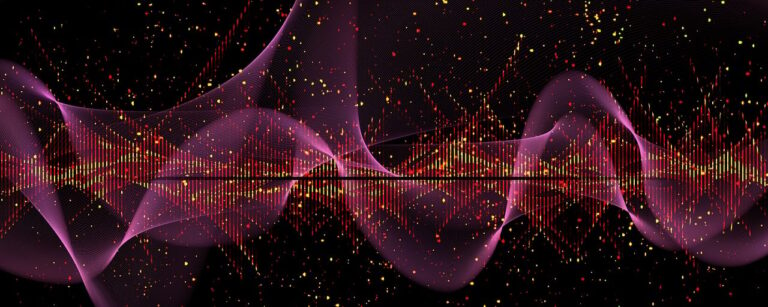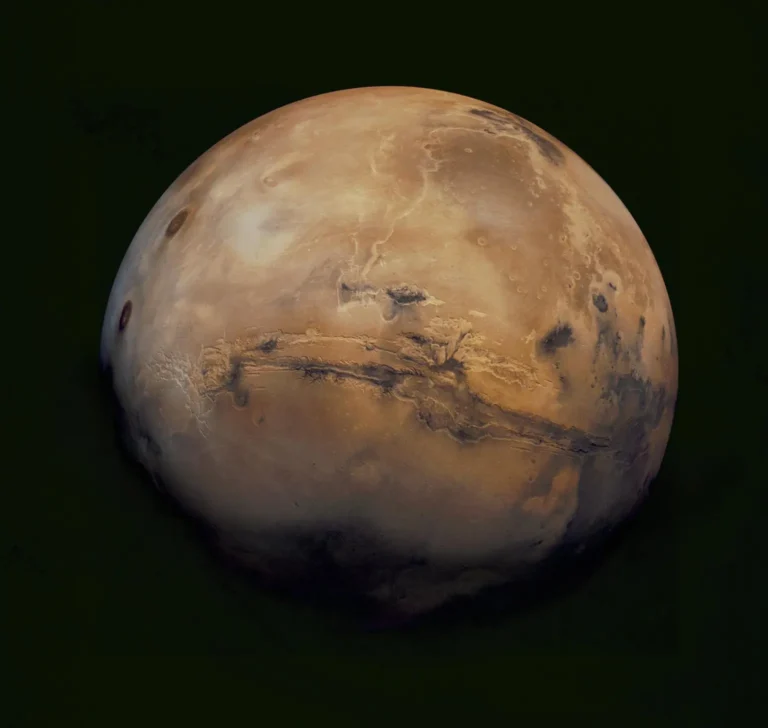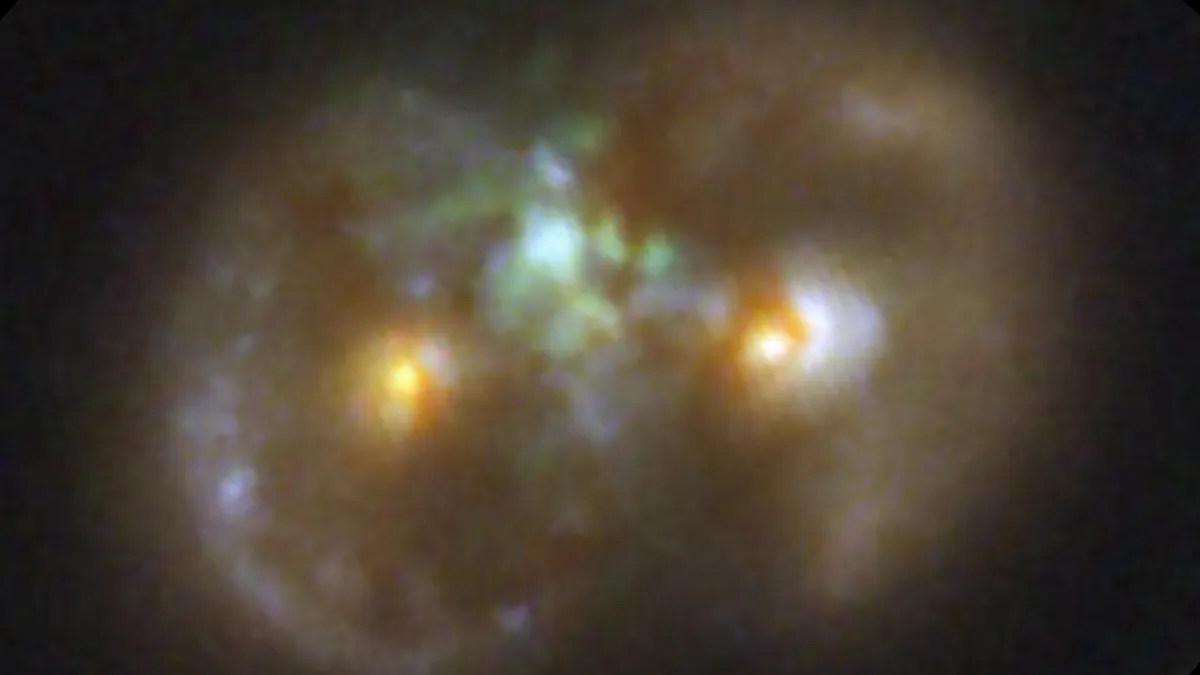
Key Takeaways:
- The James Webb Space Telescope found a unique "Infinity Galaxy" – two colliding galaxies forming a figure-eight shape.
- Between the galaxies is a huge cloud of gas, possibly indicating a newly forming supermassive black hole (SMBH).
- This SMBH's formation might challenge existing theories about how such massive black holes arise.
- The galaxy collision's turbulence and pressure may have created conditions for rapid SMBH formation.
Researchers Pieter van Dokkum of Yale University and Gabriel Brammer of the University of Copenhagen have uncovered a remarkable cosmic system in archival data from the James Webb Space Telescope’s COSMOS-Web survey: a pair of colliding disk galaxies whose overlapping rings create a glowing figure-eight, dubbed the “Infinity Galaxy.”
But it’s not just the shape that fascinates astronomers. Nestled between the two galactic cores is a vast cloud of ionized hydrogen gas, stripped of its electrons by a source believed to be a supermassive black hole (SMBH) estimated at roughly a million times the mass of the Sun. If confirmed, this could represent one of the earliest glimpses of a SMBH in formation, offering fresh insights that challenge conventional theories about where and how these cosmic giants arise.
“Finding a black hole that’s not in the nucleus of a massive galaxy is in itself unusual,” says van Dokkum, lead author on the paper and principal investigator for follow-up Webb observations. “But what’s even more unusual is the story of how it may have gotten there. It likely didn’t just arrive there, but instead it formed there. And pretty recently. In other words, we think we’re witnessing the birth of a SMBH — something that has never been seen before.”
How do SMBHs form?
The formation of SMBHs remains one of astrophysics’ biggest mysteries. The traditional “light seed” model suggests that black holes begin as the small, dense remnants of massive stars, gradually growing into SMBHs over time through mergers with other black holes. But this slow growth can’t fully explain how some SMBHs managed to bulk up so quickly in the early universe.
An alternative idea, the “heavy seed,” or direct collapse model, proposes that some SMBHs formed much faster, when massive clouds of gas collapsed directly into black holes, skipping the usual star-forming step.
For this to happen, the gas must remain hot and stable so it doesn’t fragment into stars. This typically requires two special ingredients: intense ultraviolet (UV) radiation, which breaks apart cooling molecules like molecular hydrogren, and low metallicity, since metal-rich gas cools efficiently and tends to form stars. These conditions are thought to have existed primarily in the early universe, making rapid black hole formation possible back then.
Collision may have formed SMBH through turbulence and pressure
The Infinity Galaxy, however, appears to offer a novel twist. The recent collision between two gas-rich, metal-enriched galaxies produced shocks that compressed the gas between their nuclei, creating turbulent, high-pressure conditions that suppress star formation by a different mechanism.
As the authors write, “In this formation channel, turbulence and thermal pressure, rather than the absence of metals, prevent fragmentation and star formation.”
The gas is currently spread across a region more than 30,000 light-years wide. According to the authors, “the ionized gas in between the nuclei is shocked and compressed due to the recent collision, and it may be that the black hole formed through the runaway gravitational collapse of a cloud or filament within this gas.”
This shock-driven collapse explains the black hole’s unusual position and velocity — it sits exactly in the middle of the velocity distribution of the surrounding gas, suggesting it formed there rather than wandering in or being ejected from one of the two nuclei.
Possible three blackhole system
Moreover, the two galactic nuclei themselves are massive enough to likely host their own SMBHs. “It would be interesting to look for AGN activity in the two nuclei with sensitive radio or spectroscopic observations, as that could confirm that there are three black holes in the system,” the authors note.
While the data do not yet definitively prove direct-collapse black hole formation, they strengthen the case for witnessing a newborn SMBH formed through a previously unexplored channel tied to galaxy mergers. This finding opens a new window on how some of the universe’s most massive black holes can form quickly, even in metal-rich, complex environments.
As van Dokkum sums up, “We can’t say definitively that we have found a direct collapse black hole. But we can say that these new data strengthen the case that we’re seeing a newborn black hole, while eliminating some of the competing explanations.”

